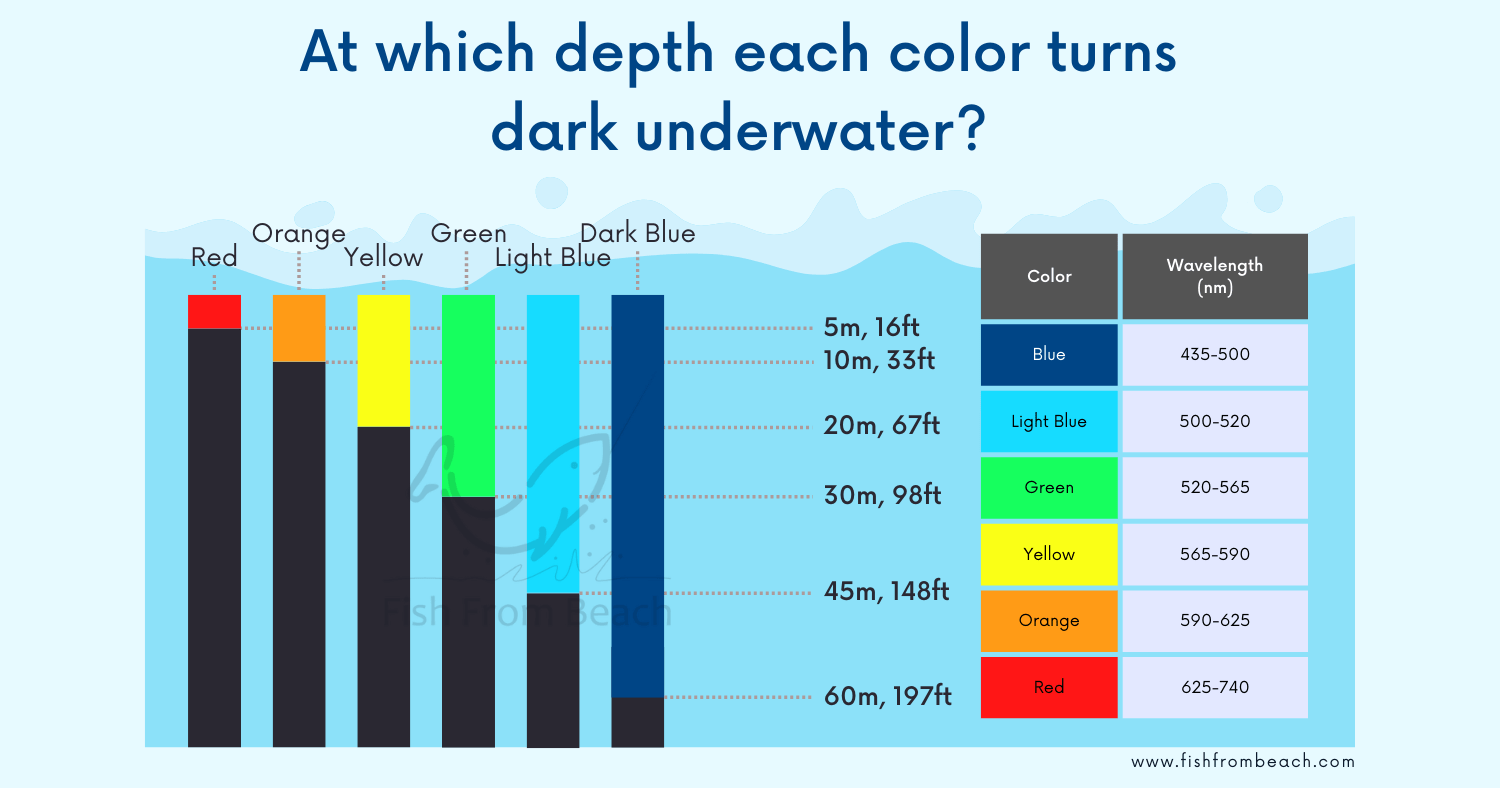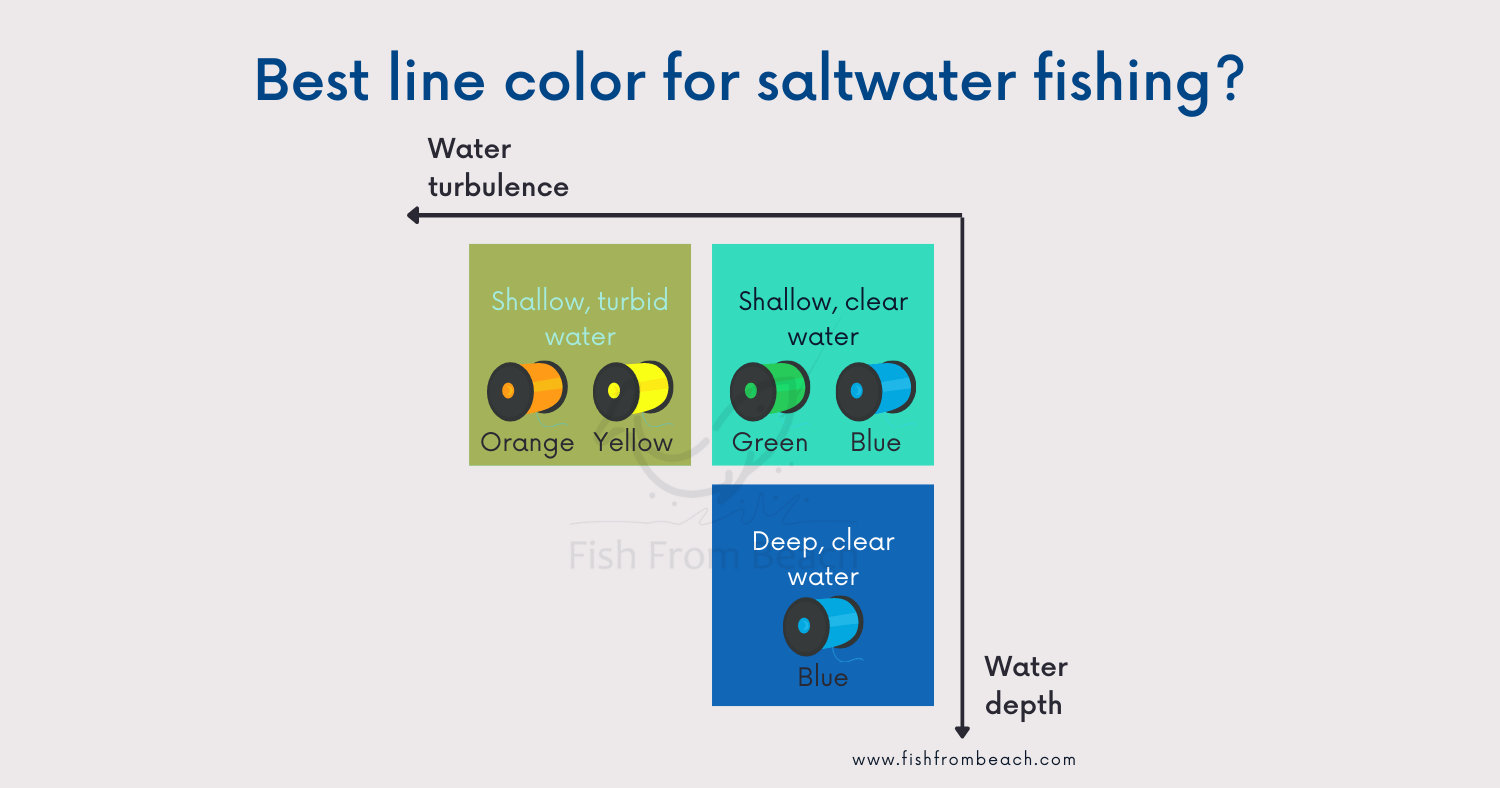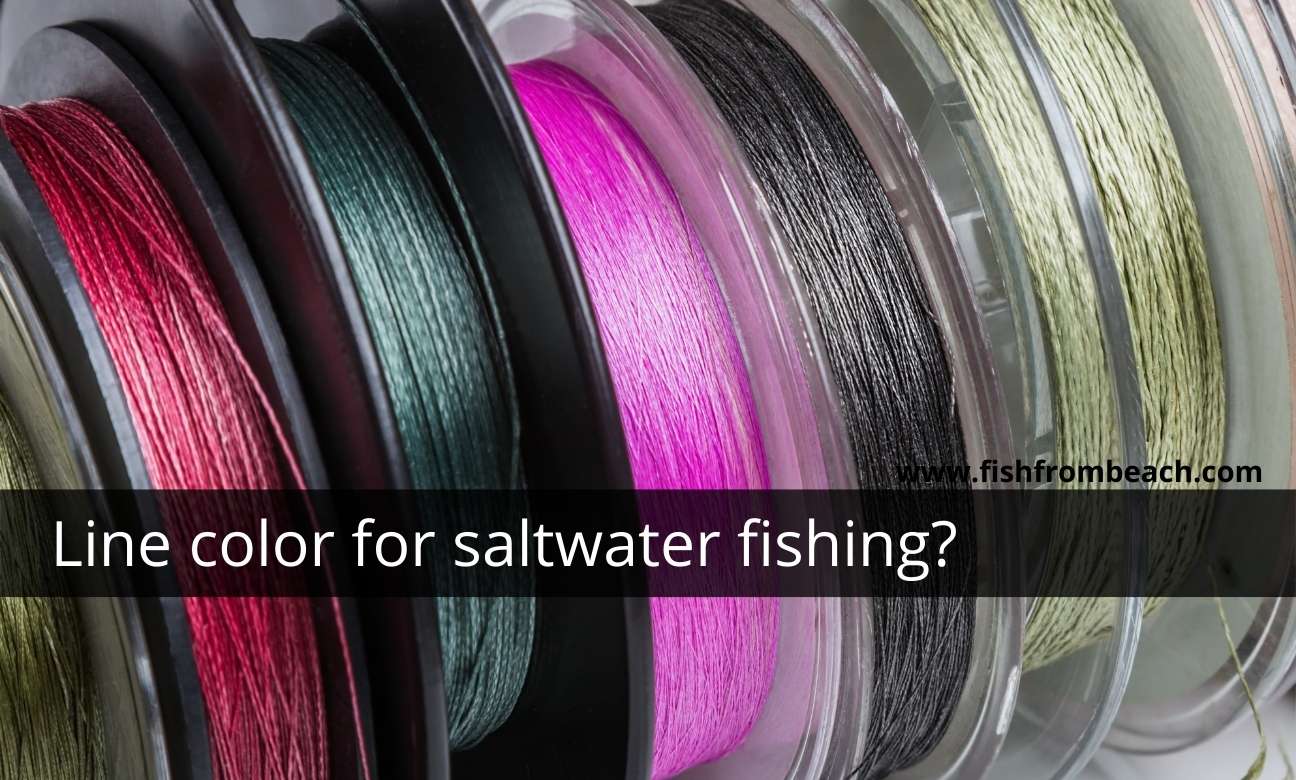Does line color matter when saltwater fishing?
Can fish see colors?
Well, this is a tough question.
The subject is still much debated among scientists interested in the topic. Some believe fish can see colors, some don’t.
What we know for sure is that many species of fish have eye cones that allow color detection. However, more studies should be done to see if their brains have what it takes to distinguish colors and if they behave differently depending on the color they see.
Personally, and faced with this debate, I prefer to be a little pessimistic and believe that fish see colors. I just prefer to be careful with my color choices although I’m not sure fish can see that. That’s much better than using any color I can find when in fact the choice matters a lot.
Moreover, researchers have discovered some species of fish with UV-absorbing cone cells. This means that there are fish that can possibly see in the ultraviolet spectrum, which is not possible for humans. So maybe fish have better color recognition than we do.
Contrast matters more
Now, whether you think fish can see colors or not, there’s something we can’t debate.
Fish have an excellent contrast-detection ability.
In other words, fish have an exceptional ability to spot silhouettes around them without necessarily being able to recognize all the details of these silhouettes.
This is a vital evolutionary skill that helps them detect prey and predators around them, giving them a better chance of survival.
They don’t need to know exactly what they’re seeing, but they do know there’s something out there, and they rely on its silhouette to tell if it’s good to eat or a threat to escape.
Therefore, for better chances, the line you use for saltwater fishing should generate a weak contrast underwater. The goal is to not trigger the high contrast-detection ability of the fish.
What is the best line color for saltwater fishing?
Well, since fish can detect contrast easily, the best line color for saltwater fishing is therefore the one that generates the weakest contrast.
The thing to know here is that darker colors receive more light and therefore produce sharper silhouettes and stronger contrasts.
You can check this yourself. Get into a closed room, switch the lights off, and observe the objects and things around you. You will find that dark objects are easier to see while light-colored objects are much harder to recognize.
The same thing applies to fishing lines and how fish see your tackle.
If you want your line to be less visible underwater, choose a light color.
Plain clear is the number one option here. Nothing comes closer.
Just like humans, fish will have a hard time seeing a transparent, clear line. Fortunately, most line manufacturers produce clear-colored lines, typically monofilament or fluorocarbon.
There are also clear braided lines on the market, but that’s not very typical.
One thing to note here is that fluorocarbon is less visible in the water than monofilament. So that may be the best choice. However, fluorocarbon is also more expensive. It’s therefore a trade-off situation 😉
What if I want to use colored braid?
Well, the same answer also applies here.
The darker the color, the more contrast it generates, and so the more visible it is.
Ok. So I just need to avoid dark-colored lines? That’s it?
Yes, but you need to make the choice based on how the color looks under the water, not in the air.
Let’s take orange, for example.
Orange is a bright color that you cannot consider dark if you see it in your tackle box. However, orange gets darker in moderately deep water, and so if you use an orange line, you may end up like using a black/dark line.
That’s not the best choice if you believe the fish get bothered when they see your line.
This concept is called color absorption and depends on two principal variables: the color wavelength, and the water depth.
Simply put, colors with longer wavelengths take less depth in order to get absorbed and, as a result, become darker. Conversely, colors with short wavelengths keep much of their look even in high depths.
So the best line colors for saltwater fishing are the ones with short wavelengths.
Here is a list of the different colors, their wavelengths, and in what depth they get absorbed:

So, as you can see, red is the color that gets absorbed first underwater. It only takes 5m/16ft to become dark. So that’s generally a bad color line for saltwater fishing unless you are in extremely shallow waters.
Orange and yellow need 33ft and 67ft respectively to become dark underwater. So they can be useful in some situations, especially in turbid and murky waters.
Green and blue keep much of their character and don’t turn dark even when sinking so deep. They are, therefore, besides plain clear, the best colors for saltwater fishing.
Personally, I try to avoid dark blue and stay between green and light blue (cyan or turquoise). Dark blue can generate a notable contrast and sharp silhouettes underwater, which may scare the fish.
Best line color for inshore saltwater fishing?
Your line will not go so deep when inshore fishing. This means that it will be subject to weaker color attenuation and keep much of its look.
Camouflage is therefore very important here. You need to make sure your line fits perfectly in the water you are fishing.
As a rule of thumb, clear waters with a greenish or blueish taint require a blue or green line. In contrast, shallow and muddy waters produce the best results with a red, orange, or yellow line.
In other words, the color you choose should match the color of the water. The smallest contrast is likely to spook the fish.
That being said, I would always think twice before using a red line in any situation.
As we said, red turns black quickly underwater and even a 5ft depth will cause a noticeable loss of red. So unless you are sure the water you fish is not so deep, don’t use a red line. It will look black, and black is easy to see by the fish.
Personally, I only go for red color when fishing dirty grass flats and estuaries that I know are very shallow.
For deeper murky waters, orange or yellow can work well as they take more depth to get absorbed.

Best line color for offshore saltwater fishing?
When offshore fishing, your line is likely to sink so deep to where everything is either black or blue.
Since black produces a sharp contrast, blue is therefore your best option.
Green is also good because it turns blue in high depths.
Red, yellow, and orange should be avoided in offshore waters because they turn dark and, as a result, become easier to see.
Wrapping up
Overall, and besides plain clear, the best line color for saltwater fishing is blue or green.
Green works great for inshore fishing because it gets camouflaged well in shallow, greenish waters. However, I would always lean towards light blue for offshore fishing because nearly everything turns blue or dark at high depths.
The other colors like red, orange, and yellow work well in shallow, turbid waters. But I recommend being careful with red since it generates notable contrasts even at very shallow depths.

Important note
What we have discussed in this article concerns only the last portion of the line that introduces the bait for the fish. This is what the fish can see, so you need to make it invisible.
The choice, however, may be different for the upper part of the line. Sometimes it is very important for the angler to be able to see their line, especially on a crowded beach, pier, or charter. This helps to avoid snags and line tangles.
Being able to see the line also helps when fighting fish, as you will know where the catch is and therefore what tactic to use to land it.
Note (*): If you make a purchase through links from this website, we may get a small share of the sale from Amazon or other similar affiliate programs.
Surf Fishing Survey
Help us provide you with better content by answering simple questions about your surf fishing experience and knowledge.
We will put the collected responses together and turn them into valuable information that will help you catch more fish from shore 😉
Note: No personal information will be collected with your answer.

